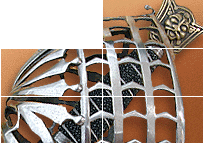| Author |
Message |
|
Carl Massaro
|
 Posted: Sun 03 Apr, 2011 10:17 pm Post subject: Posted: Sun 03 Apr, 2011 10:17 pm Post subject: |
 |
|
I'm coming in here late, but here is most of my 18th century collection, please excuse the poor lighting:
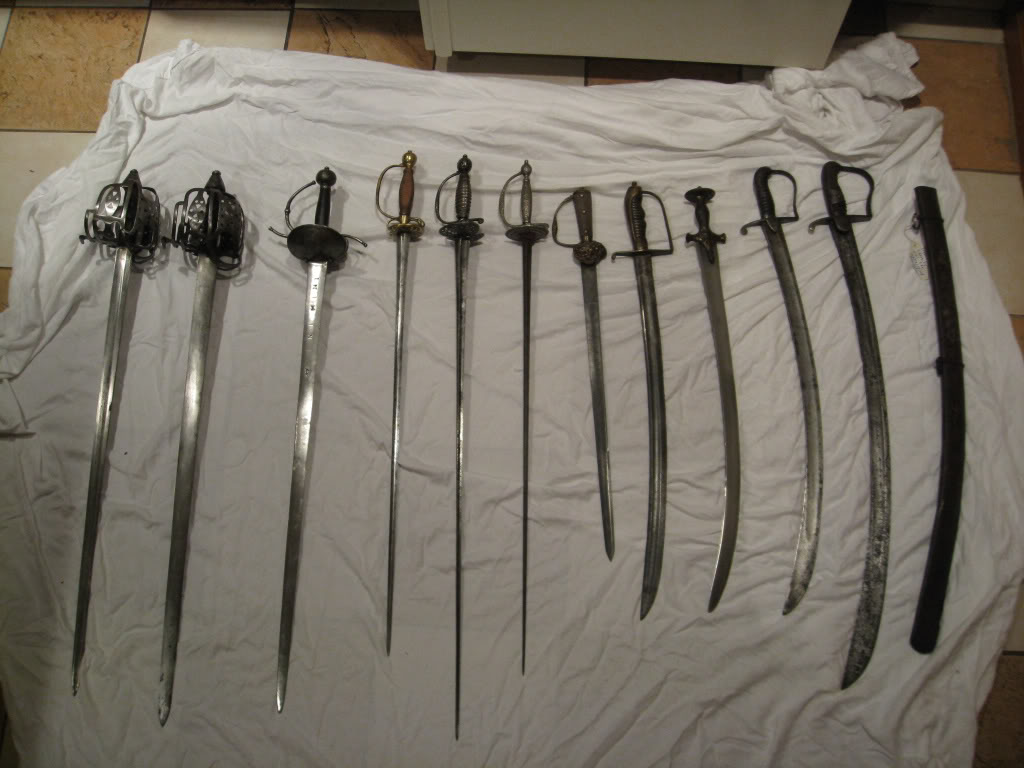
A few close-ups:
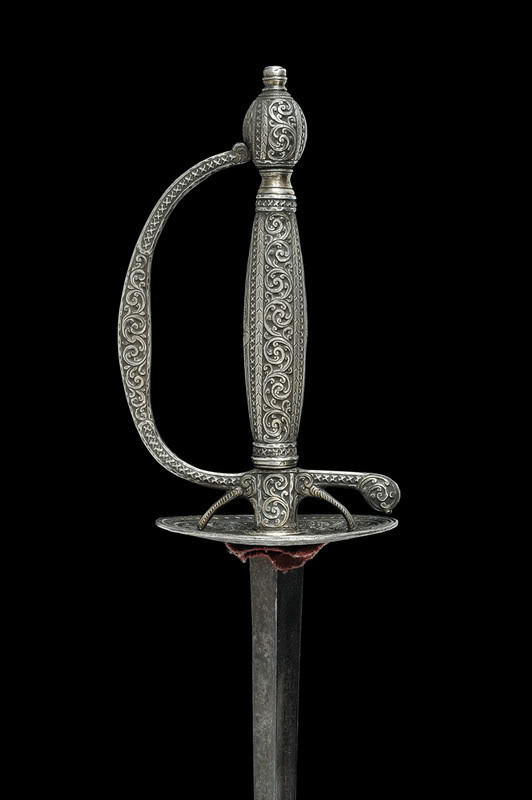
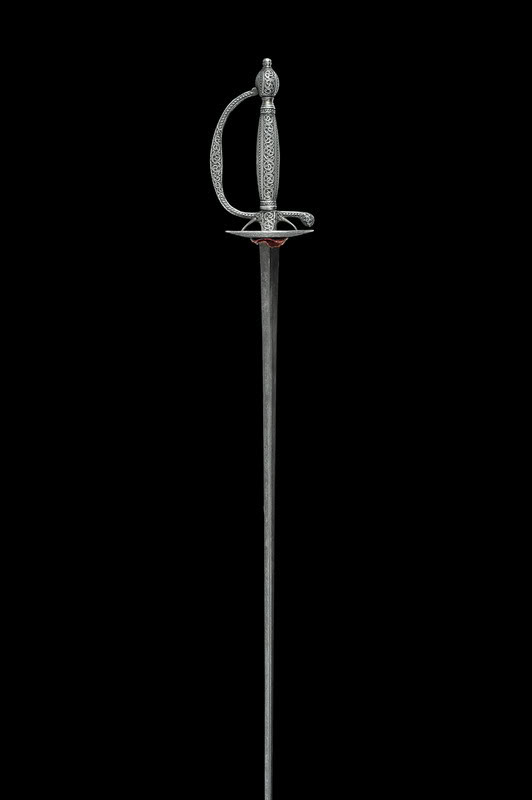

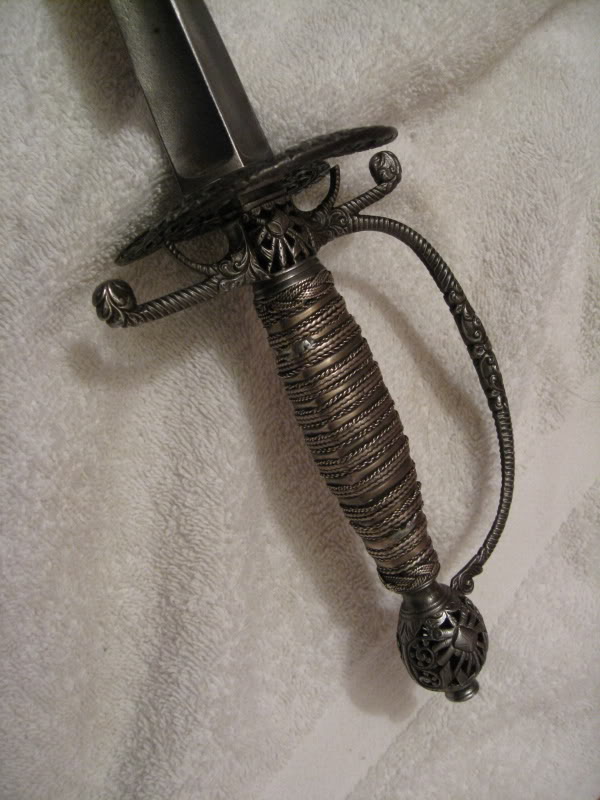
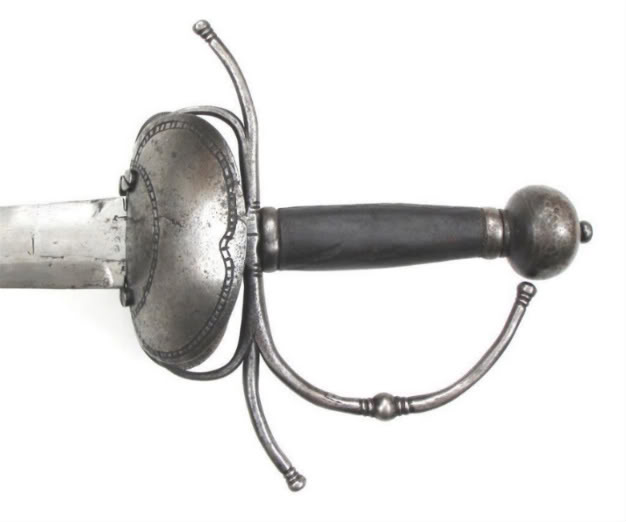 
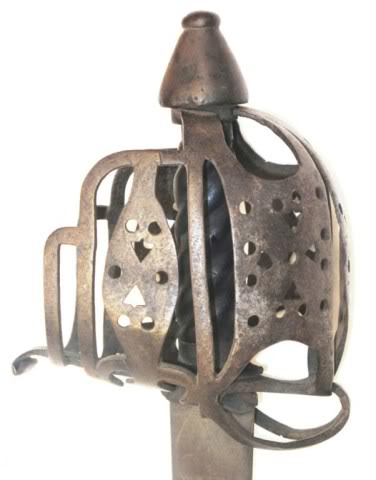 

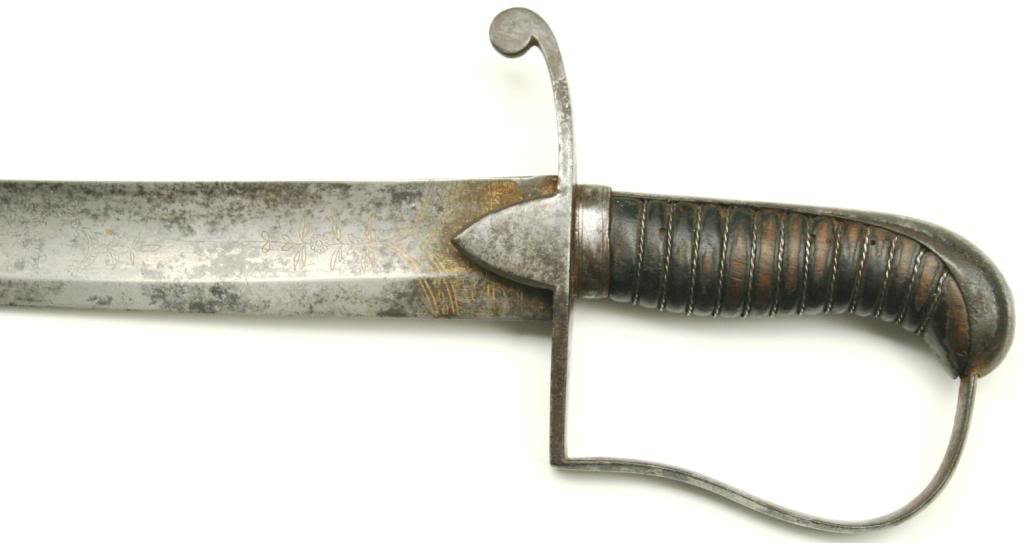 
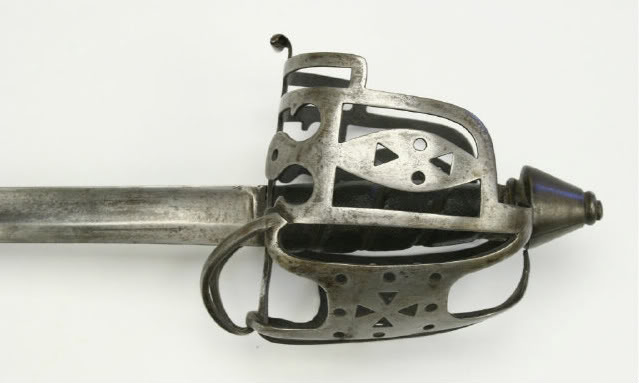 
|
|
  |
 |
Nathan Robinson
myArmoury Admin


|
|
    |
 |
|
Bryan Brown
Location: Canberra Joined: 04 Apr 2011
Posts: 1
|
 Posted: Mon 04 Apr, 2011 4:45 am Post subject: 18th Century swords Posted: Mon 04 Apr, 2011 4:45 am Post subject: 18th Century swords |
 |
|
Hi All,
I'd like to hear any info you have on this briquet that has just come into my possession. It was apparently used by my great-great etc Grandfather in the siege of Toulon, and the relief of Malta during the Naploeonic Wars. He was in the First Regiment of Foot, a precursor to the Durham Light Infantry. I understand that the saber shown was a French weapon, but as an ex British soldier, I'm no stranger to "borrowing" weaponry when my own supply chain fails! The only inscription legible is "Toledo", which would seem to indicate that it was made in Spain.
Any information that you could pass on to a relative novice in the way of swords would be greatly appreciated, Cheers!
 Attachment: 39.06 KB Attachment: 39.06 KB
[ Download ]
|
|
  |
 |
|
Tom Donoho
|
 Posted: Mon 04 Apr, 2011 5:28 pm Post subject: Posted: Mon 04 Apr, 2011 5:28 pm Post subject: |
 |
|
Carl,
Nice collection!
How does that tulwar feel in the hand--how does it handle? I believe there is a distinctive Indian manner in gripping it--but just wondering if it feels small to you. I know they are capable of devistating cuts.
Tom
Last edited by Tom Donoho on Tue 05 Apr, 2011 12:49 am; edited 1 time in total
|
|
  |
 |
|
Carl Massaro
|
 Posted: Mon 04 Apr, 2011 7:28 pm Post subject: Posted: Mon 04 Apr, 2011 7:28 pm Post subject: |
 |
|
Hi Tom,
Thanks! I have large hands and the tulwar is a bit too small for them. I always used a standard natural grip. Most tulwars I have held have been a tight fit in my hand, and all of the 18th century varieties have been very light and well balanced. It is a nice piece though, ultra light, and the blade is made of wootz with gold inlay.
|
|
  |
 |
|
Bryan W.
|
 Posted: Mon 04 Apr, 2011 8:24 pm Post subject: Posted: Mon 04 Apr, 2011 8:24 pm Post subject: |
 |
|
|
Very nice pieces Carl.
|
|
  |
 |
Morgan Butler

|
 Posted: Tue 05 Apr, 2011 12:36 am Post subject: Posted: Tue 05 Apr, 2011 12:36 am Post subject: |
 |
|
Nice to see that new Spanish Bilbo among your other swords Carl. Can you tell me about the sabre that is 4th from the right?
inkothemgard!
|
|
  |
 |
|
Tom Donoho
|
 Posted: Tue 05 Apr, 2011 12:44 am Post subject: Posted: Tue 05 Apr, 2011 12:44 am Post subject: |
 |
|
My experience has been the same handling tulwars--but there are accounts that they were very effective in Indian hands. And I recall a portrait of an English officer c. 1800 with a tulwar strapped to his belt--maybe a trophy or maybe in homage to duty over sea or both.
The biblo always struck me as being a rather strange choice of sword by the Spanish-it looks so awkward--but how does it handle?
Those broad/back swords are very nice--any information to share on those would be welcome.
Tom
|
|
  |
 |
D Critchley

|
 Posted: Tue 05 Apr, 2011 3:00 am Post subject: Re: 18th Century swords Posted: Tue 05 Apr, 2011 3:00 am Post subject: Re: 18th Century swords |
 |
|
| Bryan Brown wrote: | Hi All,
I'd like to hear any info you have on this briquet that has just come into my possession. It was apparently used by my great-great etc Grandfather in the siege of Toulon, and the relief of Malta during the Naploeonic Wars. He was in the First Regiment of Foot, a precursor to the Durham Light Infantry. I understand that the saber shown was a French weapon, but as an ex British soldier, I'm no stranger to "borrowing" weaponry when my own supply chain fails! The only inscription legible is "Toledo", which would seem to indicate that it was made in Spain.
Any information that you could pass on to a relative novice in the way of swords would be greatly appreciated, Cheers! |
Bryan,
The Durhan Light were formed from the 68th Foot not the 1st. The 1st Foot are the Royal Scots
The 68th don't seem to have been at Toulon unless some served temporarily as marines
http://www.napoleon-series.org/military/organ...hFoot.html
The Royal Scots / 1st Foot were however at Fort Mulgrave (Little Gibraltar) off Toulon, finally taken by Bonaparte in December 93
http://www.napoleon-series.org/military/organ...tFoot.html
My knowledge of French patterns of that period is much weaker than on the British ones but I'm pretty sure your sword cannot be from then, I think French troops would almost certainly still have carried the 1767 older pattern at that point.
I think your sword probably dates from the 1840s but it might be earlier. The 3rd Battallion Royal Scots were on the Peninsular France and Belgium
David
|
|
  |
 |
Morgan Butler

|
 Posted: Tue 05 Apr, 2011 2:16 pm Post subject: Posted: Tue 05 Apr, 2011 2:16 pm Post subject: |
 |
|
Here is an awesome sword that Thom R. gave me permission to post. Here is his info on it:
"I don't think I have shown this one before. Its a 26 inch long, single edged, hollowground sword with a brass baroque styled hilt. Probably mid 18th c. There is a slight false edge near the tip and the sword has a rather fascinating cut & thrust type of blade which I have not seen elsewhere. Inscription on the sword reads "Hoc Langi Morti Ferrum". Also has some engraving. The spine is 1/4 inch so its quite stiff but because of the hollowground cross section, blade is rather light (and sharp along the one edge). Bigger than a dagger yet shorter than most smallswords of the period. Seems like a personal defense weapon, something a coachman might have used or for someone who wanted a more easily concealed sword on their person when out in public. Morgan is right - so many unique styles of swords in the mid 18th century!
Blade is 26 inches. sword is about 34. Morti ferrum translates (at least to me) as "deadly steel", exactly what "langi" would translate to in latin is somewhat debateable i suppose. The blade seems purposefully built, given that it is from the era when the smallsword and other types of hangars were so prevalent. yet the hilt offers very little protection for the hand - certainly much less than a smallsword and less than many of the swords that today we would call "pillow swords". so it just seems to me that the sword was deliberately built for someone who knew how to use a blade but wanted an easily carried and concealable sword."
 Attachment: 87.47 KB Attachment: 87.47 KB
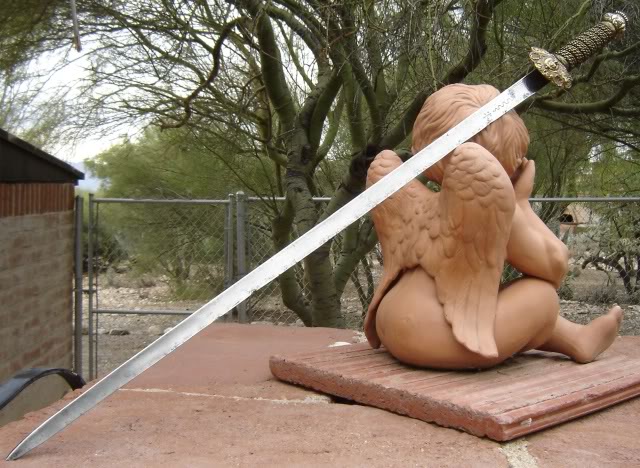
 Attachment: 39.61 KB Attachment: 39.61 KB

 Attachment: 34.06 KB Attachment: 34.06 KB
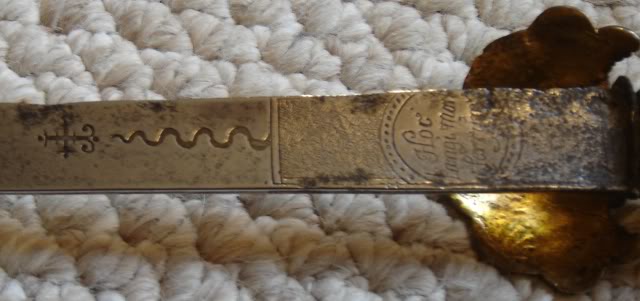
inkothemgard!
|
|
  |
 |
|
Bryan W.
|
 Posted: Tue 05 Apr, 2011 7:12 pm Post subject: Posted: Tue 05 Apr, 2011 7:12 pm Post subject: |
 |
|
| Morgan Butler wrote: | | Here is an awesome sword that Thom R. gave me permission to post. |
Very unusual piece. I have several things I want to say but honestly, Im not sure what to make of it. It almost looks like a cutdown/modified smallsword.
|
|
  |
 |
Thom R.

|
 Posted: Tue 05 Apr, 2011 8:09 pm Post subject: Posted: Tue 05 Apr, 2011 8:09 pm Post subject: |
 |
|
| Bryan W. wrote: | | Morgan Butler wrote: | | Here is an awesome sword that Thom R. gave me permission to post. |
Very unusual piece. I have several things I want to say but honestly, Im not sure what to make of it. It almost looks like a cutdown/modified smallsword. |
Its not a cutdown smallsword.... feel free to ask me anything you like. It is a rather unusual piece. The single edged blade almost has a pipeback or t-shape section it is so strongly hollowground.
I have been meaning to get more pictures of my 18th c swords for this excellent thread but have not had the time lately. tr
|
|
  |
 |
D Critchley

|
|
  |
 |
Morgan Butler

|
 Posted: Wed 06 Apr, 2011 2:22 pm Post subject: Posted: Wed 06 Apr, 2011 2:22 pm Post subject: |
 |
|
Thanks David,
I really love the infantry sword with the spiral pommel and the branches. Beautiful! It must have great balance and speed. Very 18th century. Also, thats a very classic Flank Officer's sabre you have as well.
inkothemgard!
|
|
  |
 |
|
Tom Donoho
|
 Posted: Wed 06 Apr, 2011 9:54 pm Post subject: Posted: Wed 06 Apr, 2011 9:54 pm Post subject: |
 |
|
That short saber on the far right--that's the kind of saber I like! Very nice!
I'm also fond of that spadroon with the cross-guard, fold away shell and urn pommel. Beautiful!
Tom
|
|
  |
 |
Morgan Butler

|
 Posted: Wed 06 Apr, 2011 10:59 pm Post subject: Posted: Wed 06 Apr, 2011 10:59 pm Post subject: |
 |
|
Lest we forget, that great pierced steel smallsword with the forward and rear quillons!
inkothemgard!
|
|
  |
 |
|
Tom Donoho
|
 Posted: Wed 06 Apr, 2011 11:40 pm Post subject: Posted: Wed 06 Apr, 2011 11:40 pm Post subject: |
 |
|
Yep! (This appears to be somewhat unique--butterfly shells are usually paired with a single quillon.)
Let's not forget that silver-hilt SS. 
Tom
|
|
  |
 |
D Critchley

|
 Posted: Thu 07 Apr, 2011 2:00 am Post subject: Posted: Thu 07 Apr, 2011 2:00 am Post subject: |
 |
|
| Tom Donoho wrote: | That short saber on the far right--that's the kind of saber I like! Very nice!
I'm also fond of that spadroon with the cross-guard, fold away shell and urn pommel. Beautiful! |
Thanks chaps,
The small sabre feels very much like a cuttoe, same sort of balance and weight, the cruciform spadroon is a style thought to have been used by the Artillery before 1796 or possibly by the Honourable Artillery Company, most have a canon engraved on the pommel. Looks nice but it has a very heavy hilt.
David
|
|
  |
 |
|
Tom Donoho
|
 Posted: Thu 07 Apr, 2011 6:33 am Post subject: Posted: Thu 07 Apr, 2011 6:33 am Post subject: |
 |
|
I bet that short saber was sharp i its day--one could probably shave with it.
David,
If possible, would you post a hilt shot of that cruciform spadroon--with the shell up and down, if possible. I am assuming that the blade is more or less like a regulation spadroon blade of the period. But the hilt fascinates me.
Tom
|
|
  |
 |
Sa'ar Nudel

|
 Posted: Thu 07 Apr, 2011 9:35 am Post subject: Posted: Thu 07 Apr, 2011 9:35 am Post subject: |
 |
|
A cutlass project from the past - I use it frequently for demonstrations. The blade is antique.
 Attachment: 68.84 KB Attachment: 68.84 KB
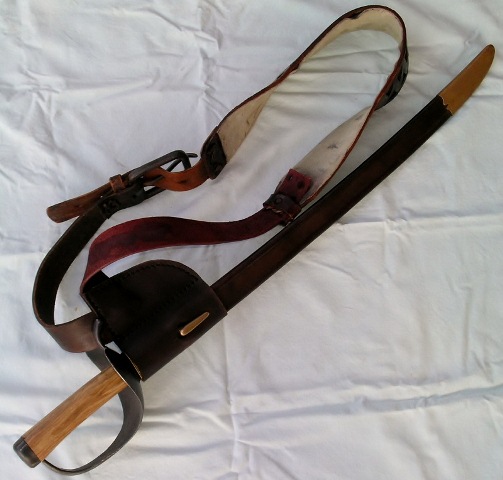
 Attachment: 66.32 KB Attachment: 66.32 KB
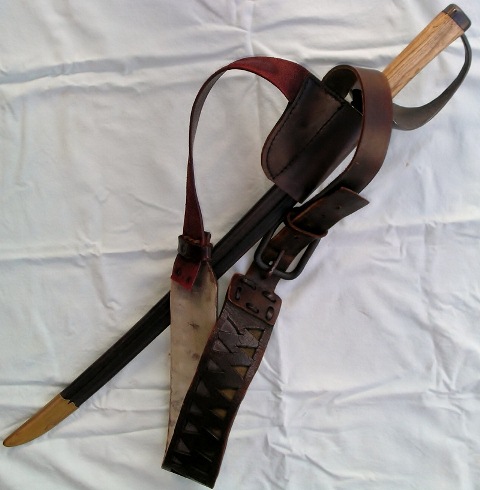
 Attachment: 69.46 KB Attachment: 69.46 KB
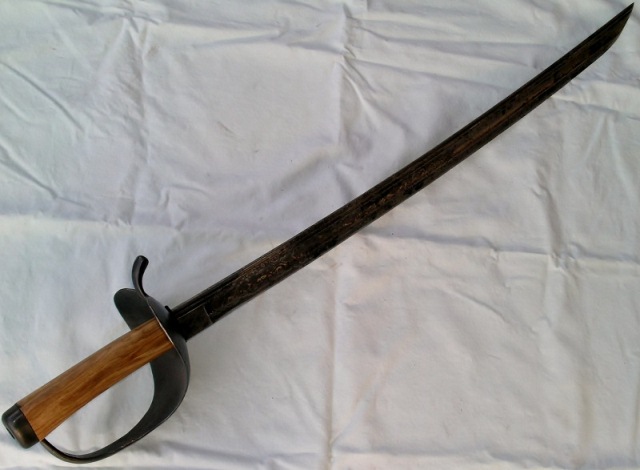
 Attachment: 66.68 KB Attachment: 66.68 KB
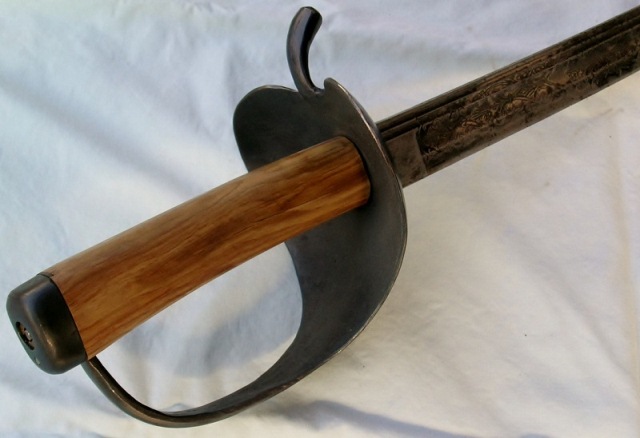
 Attachment: 81.39 KB Attachment: 81.39 KB

Curator of Beit Ussishkin, regional nature & history museum, Upper Galilee.
|
|
   |
 |
|
|
